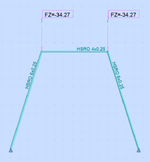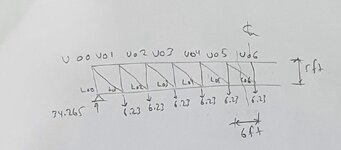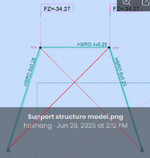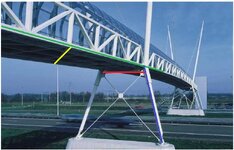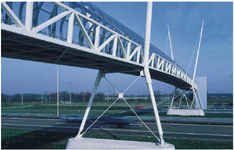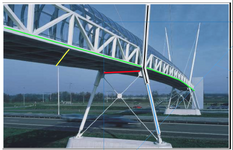BA,
appreciate your valuable insights. Please find the attached image:
Assume the cables and its supports don't exist, the truss is supported by the inclined member (blue) via bottom chord (green). Why is the horizontal member (red) is there? Can't floor beams (yellow) between the blue lines take the same role as the red one (i.e., make yellow and red as one member? Why the red line is lower than the yellow one? is it to make a room for welding? The inclined member (blue) isn't in the plane of the truss, how the joint connecting green, blue, truss diagonal can be analyzed and designed?

